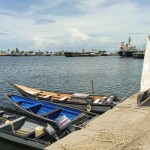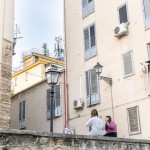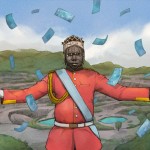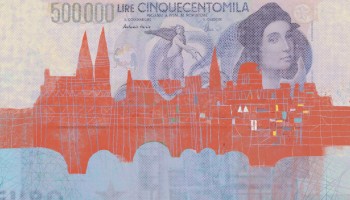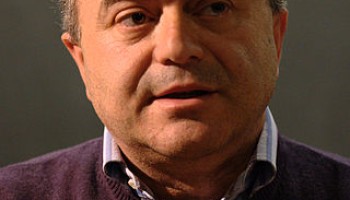“Fiiiive!” screams a boy, clenching his jaw and extending two fingers toward his opponent. “Seven!” the other roars back simultaneously, flaring his nostrils and stabbing four fingers at the first boy.
Surrounded by men in their early twenties, the two keep on screeching numbers, while flashing different ones with their fingers so quickly that astonished passersby stop to admire their skill. The one who successfully guesses the number of fingers revealed by both scores a point.
The ancient game of Morra is played throughout the Mediterranean and involves strategy, tactics, and boundless energy.
Here in the mountains of Calabria, on the toe of the Italian “boot,” players have to be fast, furious, and scary. The grimaces and threats of the game as played here reflect a way of life.
After all, this is the cradle of the ‘Ndrangheta — one of the richest and most powerful crime syndicates in the world.
Some researchers and antimafia investigators alike consider Morra to be closer to verbal jousting between fellow villagers, competing for territory or prestige. They characterize it as a traditional mafioso game, in which arrogance, rudeness, and manipulation are essential skills.
Because of this heritage, playing Morra is illegal but tolerated during the Festa della Madonna di Polsi, held every year on Sept. 2 and 3.
Thousands of faithful flock to the small mountain village of Polsi to watch the statue of the Madonna of Polsi being paraded to the sound of music and prayers of worshippers.
But as the crowd follows the Madonna down the narrow streets, mafia kingpins are presumed to be holding their secret meetings somewhere nearby, perhaps even in San Luca, a village widely regarded as the birthplace of the ‘Ndrangheta.
Organized crime groups like the ‘Ndrangheta have a long history of using religious symbolism to cement loyalty, sacrifice, and honor — virtues expected of every mafioso. It’s just one reason why the ‘Ndrangheta has such deep roots in remote and poor parts of Calabria.
The Morra competition starts after dinner and lasts until six in the morning. Few outsiders stick around to see who wins, but youngsters play it to flaunt their skills in hope they will be noticed by the elders as promising future criminals.
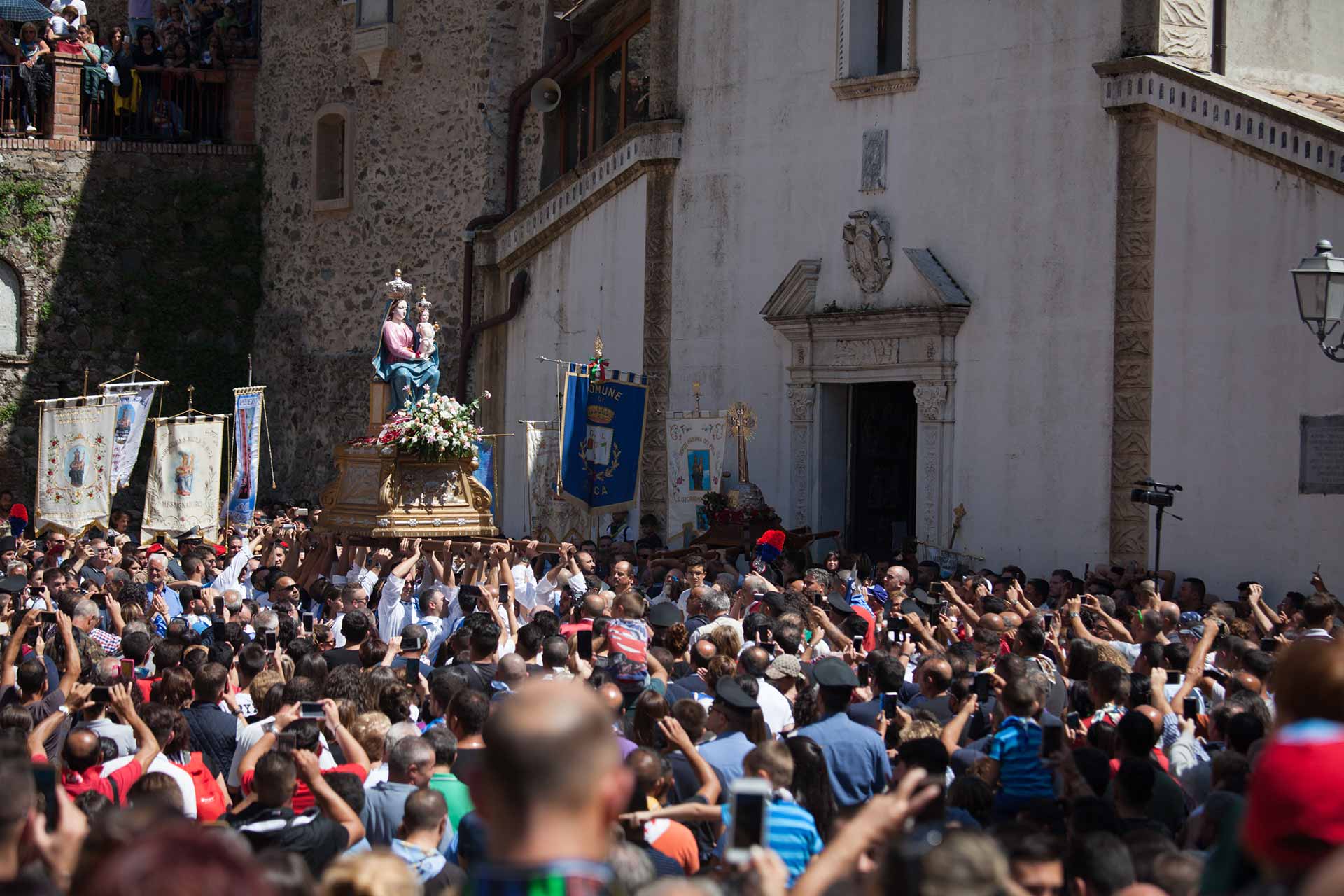 Festival of the Madonna di Polsi by Antonio Lemma
Festival of the Madonna di Polsi by Antonio Lemma
Devotees of Mary
“We’re astonished; we didn’t believe people really live like this,” said one of the visitors who arrived on a motorbike from Palmi, a city in eastern Calabria. This was his first visit.
“We in Palmi live completely differently, we have universities, clubs, a lot of cultural activities,” he said. “This place is so isolated, it’s incredible. We came here to see it with our own eyes, they live as they did in the 1800s.”
The Aspromonte mountain range crosses southern Calabria. Its literal meaning is “the bitter mountain,” and the name is apt: it’s stark, beautiful, and isolated. It looks like a vision from another century, untouched by the passage of time. There are no phone lines here, and no internet connection.
Matteo Salvini, Italy’s new interior minister from the Lega party, visited San Luca on Aug. 15. He vowed to build a road from San Luca to the sanctuary at Polsi, and to finally install an internet connection.
During the Festival of Polsi, Morra is played in a secluded corner of a square near the sanctuary to avoid attracting the attention of the police or strangers. Moreover, in a strange deference to the divine, the players seek to avoid disturbing the women praying at sunset in the chapel next door.
Some even sleep inside as others keep vigil. They don’t wander around or dance the traditional tarantella. And they certainly don’t play Morra.
Among them is Rosa, who seems about 55 years old and says she has never missed a festival at Polsi in her life. She comes from Natile, a nearby village of 1,300 inhabitants. Rosa avoids the crowds, spending night and day on the balcony of her room at the pilgrims’ dormitory, where she believes a traditional Calabrian woman should stay.
Rosa told reporters that women in Calabria are devoted to the Holy Mary of Polsi, who protects their health and fertility and has even made miracles happen, which is why so many women come to pray to her.
But the sanctuary at Polsi has entered criminal as well as spiritual legend. Nearly a decade ago, Italy’s antimafia prosecutors revealed how ‘Ndrangheta bosses organized meetings just down the road from the sanctuary at Polsi.
The mafiosi tradition has always been intertwined with a particular interpretation of Christian virtues: paternal or clan loyalty is the basis for omerta, the vow of silence. The spirit of sacrifice sustains the long years which some mafiosi spend as fugitives or behind bars. Most importantly, both traditions celebrate faith in infinite spiritual power: either of God or of the ‘Ndrangheta. Sometimes of both.
After speaking to reporters for a little while, Rosa seems to doubt their good faith.
“This is a religious festival, there’s nothing mafia-related here,” she says. “All these police checks have ruined the party; a lot of people from my village and others in the Aspromonte [region] don’t come here anymore because they’re constantly under investigation. I’ve been investigated too, but we’re not mafia. The authorities, the police, prosecutors, all of them, make a big fuss about it. There’s no mafia. There are some gang activities, yes, but that’s different.”
Rosa blames this misrepresentation of the Polsi festival for the dwindling number of visitors. According to the Carabinieri, the Italian police in charge of public security during the event, between 10,000 and 15,000 people attended this year. In the past, Rosa says, she’s seen crowds three times larger.
 Foto by Antonio Lemma
Foto by Antonio Lemma
“Will you tell the truth?” she asks before returning to her work, preparing rose petals which will be thrown over the statue of the Holy Mary during the procession in a few hours.
Rosa is not the only one who wonders what the reporters are up to at Polsi. Other worshippers are quick to make their views heard, stating that the ‘Ndrangheta has no presence there.
This is despite the fact that the beloved former priest of Polsi resigned two years ago after being charged with mafia-type criminal association.
Today and Yesterday
The sanctuary of the Holy Mary of Polsi is built on a hillside. Its upper section houses rooms for pilgrims and a small cafe run by Peppe Italiano, one of the few inhabitants of Polsi, a cluster of houses near the sanctuary. The 75-year-old, who has never traveled more than 50 kilometers from this small village in his life, has set up a small garden for beer drinkers. There’s room on the steps for a three-man tarantella band to entertain them.
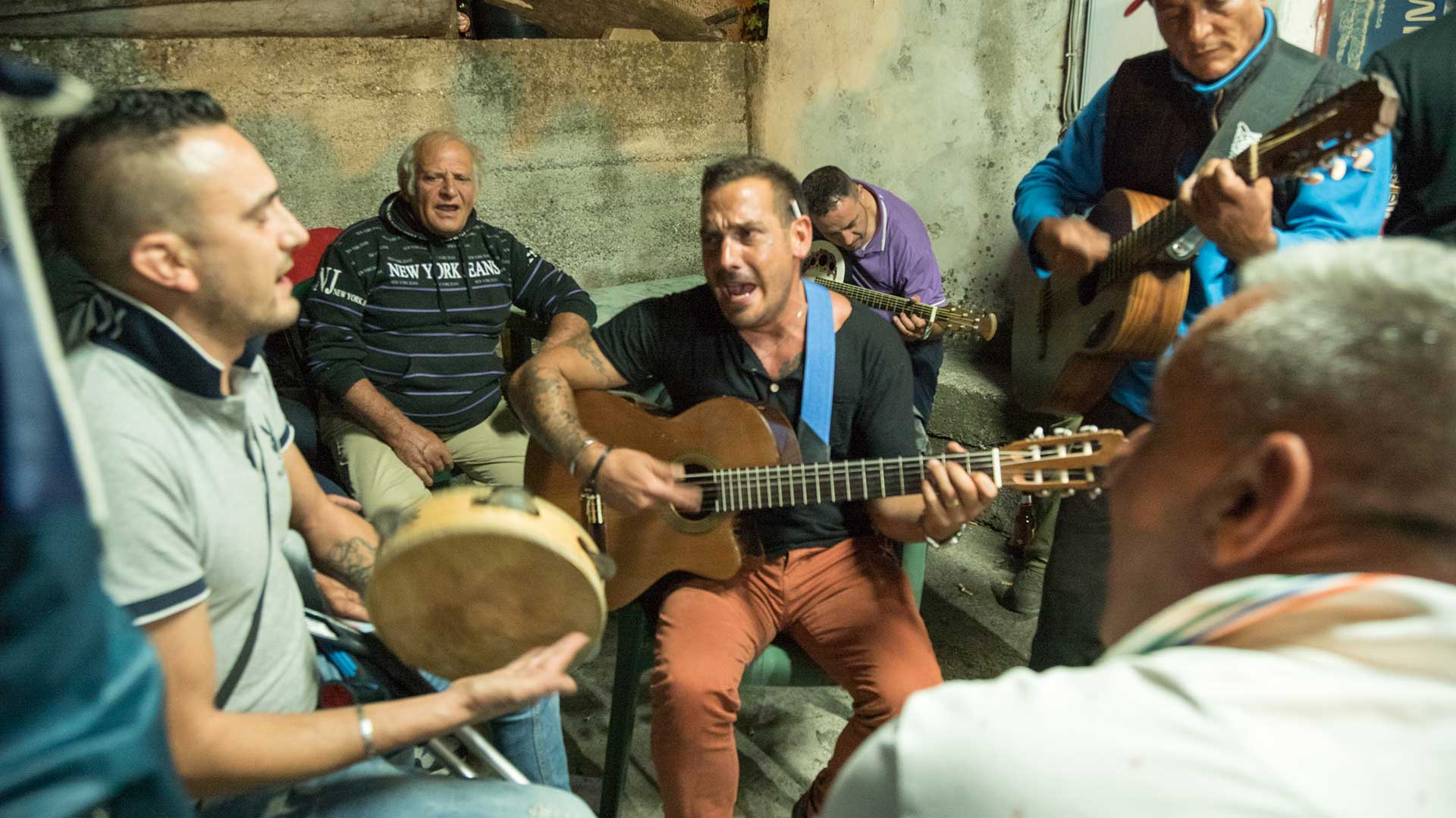 Tarantella band. Photo by Antonio Lemma
Tarantella band. Photo by Antonio Lemma
The story of the tarantella says a lot about the ‘Ndrangheta. Many songs which accompany this traditional folk dance tell heroic tales of criminal brotherhoods hiding out the woods of the Mezzogiorno, the old-fashioned term for a region of southern Italy that encompasses Calabria, Apulia, Campania, Basilicata and the islands of Sicily and Sardinia.
The ‘Ndrangheta was born in the late 19th century as a movement of brigands like these, and soon turned into a resistance movement against a state which was largely absent from the lives of rural Calabrians. Even today the state’s presence is rarely felt, and when it does make an appearance, locals feel it only brings trouble.
The ‘Ndrangheta began as a movement of angry peasants who were barred from owning land. It has since grown into a powerful criminal syndicate that uses ignorance and isolation to dictate a different law to those under its sway: a rule of blood and saints which helps portray organized crime as the only path towards social redemption.
It’s still midnight, and Italiano’s cafe is packed with drinkers and dancers. The tarantella is danced like a Morra competition, in pairs surrounded by a circle of spectators. A tourist girl is pulled in, dances for a few minutes, and then makes an exit. She gets scolded by the spectators: “You never leave the tarantella until the [leading lady] says you can!”
In these parts, tradition is felt strongly. People were once stabbed for not respecting it.
Today, foreigners can be forgiven such mistakes. Even for criminals, Polsi isn’t what it once was. Carabinieri captain Ermanno Soriano says he doesn’t believe mafiosi still meet during the procession at Polsi.
“There is a persistent presence of the Italian law enforcement agencies, and church institutions have publicly condemned those who use the sanctuary for purposes other than religion,” he explains. This is the case even while the ‘Ndrangheta still respect the event for traditional and symbolic reasons.
Soriano is convinced that the procession of the Holy Mary will be joined by pilgrims, not mafiosi.
At least, that’s his hope, and his prayer to the Holy Mary.
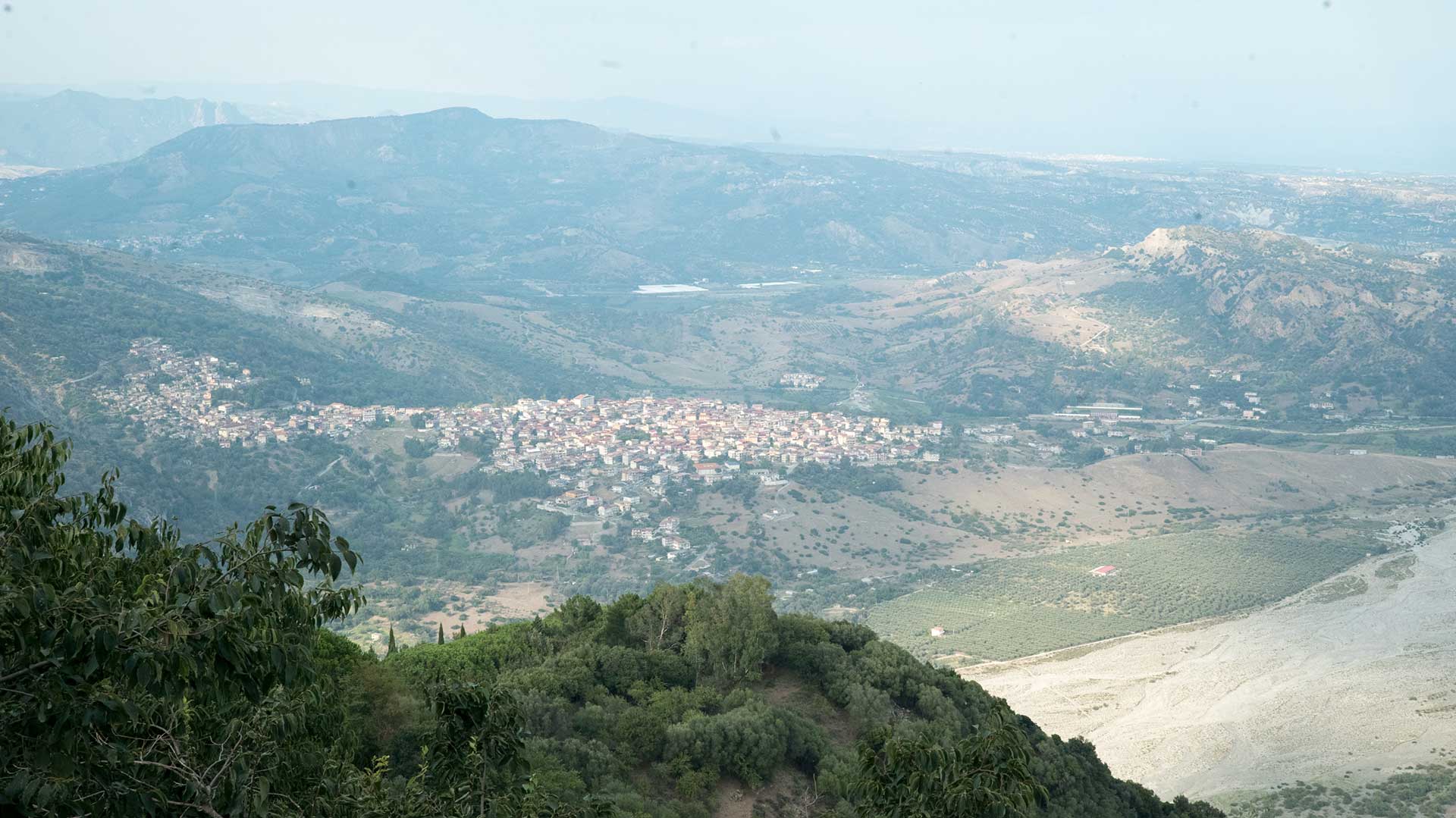 Calabria. Photo by: Antonio Lemma
Calabria. Photo by: Antonio Lemma
A Bloody Past
San Luca is a village of just 3,000 inhabitants some 20 kilometers from Polsi along a gravel road. It’s a cluster of houses perched on a rocky slope beside a fiumara, one of the dry rivers characteristic of the Aspromonte which, when it rains, cascade from the top of the mountaintops down to the Ionian Sea.
The ‘Ndrangheta call San Luca “The Mother,” in homage to the fact that the village was the criminal group’s original stronghold.
And it’s here where one can best see the costs of an ‘Ndrangheta feud.
A cluster of unfinished buildings stand open to the elements: the ground floor and first floor are cemented and painted, but the second floor is a mess of bricks and metal rods, stretching out like fingers into the open sky. The interiors are decorated with gold and marble, and even have systems of underground bunkers and tunnels which could be lifesavers to a criminal on the run.
Mafiosi have reason to hide, and not just from police.
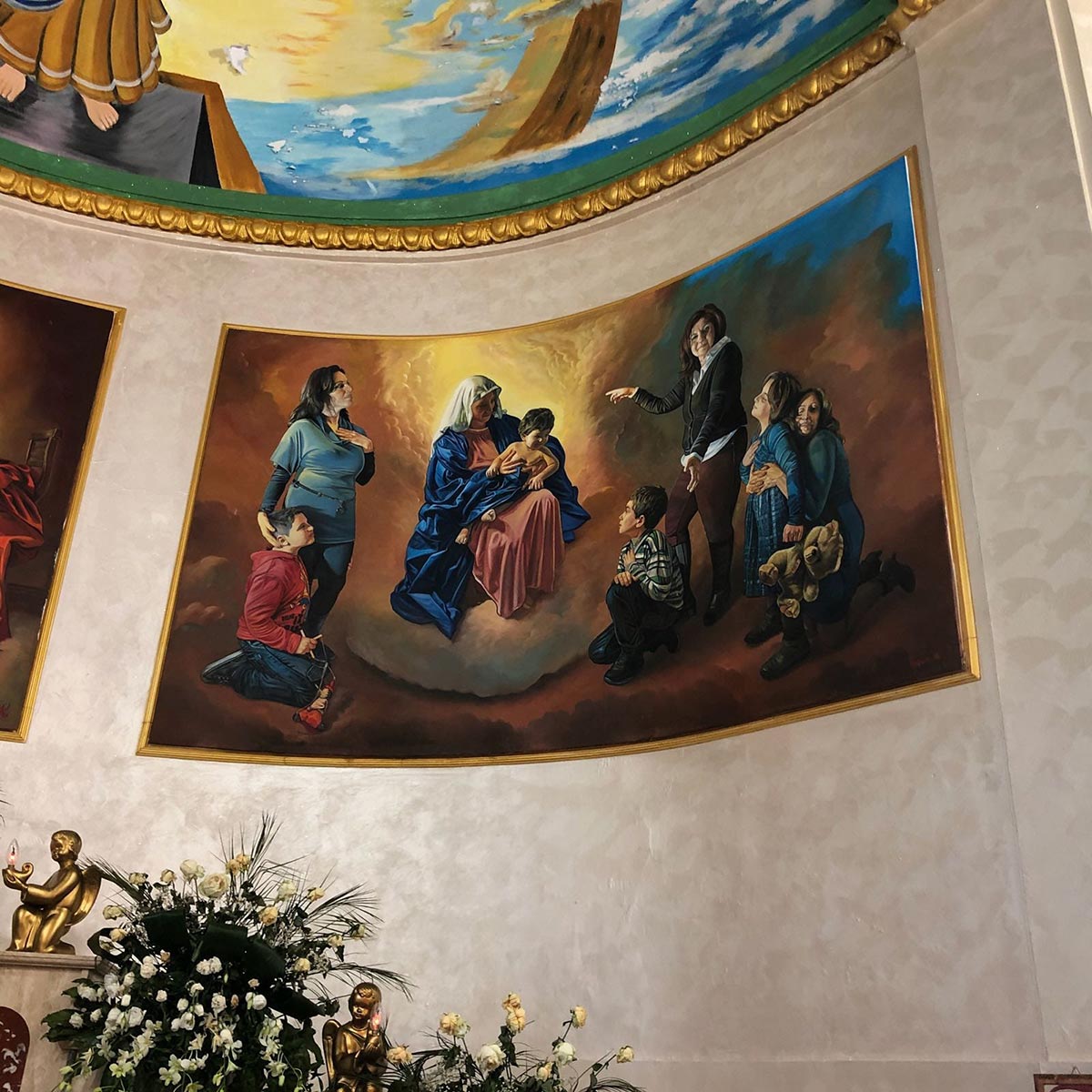 In one fresco commemorating the Duisburg massacre, the Virgin Mary is surrounded by mothers and their children from the feuding families, one holding a teddy bear. Photo by: Antonio LemmaSan Luca is famous for having been the tinderbox of a bloody feud between four families, which ended only after the so-called “Duisburg massacre” in Germany in 2007.
In one fresco commemorating the Duisburg massacre, the Virgin Mary is surrounded by mothers and their children from the feuding families, one holding a teddy bear. Photo by: Antonio LemmaSan Luca is famous for having been the tinderbox of a bloody feud between four families, which ended only after the so-called “Duisburg massacre” in Germany in 2007.
The ‘Ndrangheta is led by a supreme council called the Provincia or Crimine made up of bosses representing various territories in Calabria, which are known as mandamenti.
From the perspective of a crime boss, feuds between clans are bad for business: they attract unwanted attention and disrupt criminal rackets. But while the ‘Ndrangheta is a unitary organization, and its leaders’ decisions are usually respected, the deadly feud of San Luca proved particularly intractable, and the top bosses struggled to stop it for years.
It all started in a village cafe in 1991, when some youngsters from the Pelle-Vottari families (also known as the Vanchelli-Frunzus, as many in the group use aliases) threw some eggs at kids from the Nirta-Strangio (alias Versu-Janchi) families. The latter group began to beat up their attackers, who then drew weapons and shot back.
The egg-conflict erupted into a years-long bloody war that stretched all the way to Germany.
A string of serious murders took place in San Luca over the following years, and on Aug. 15, 2007, the Nirta-Strangio families decided to brutally strike back.
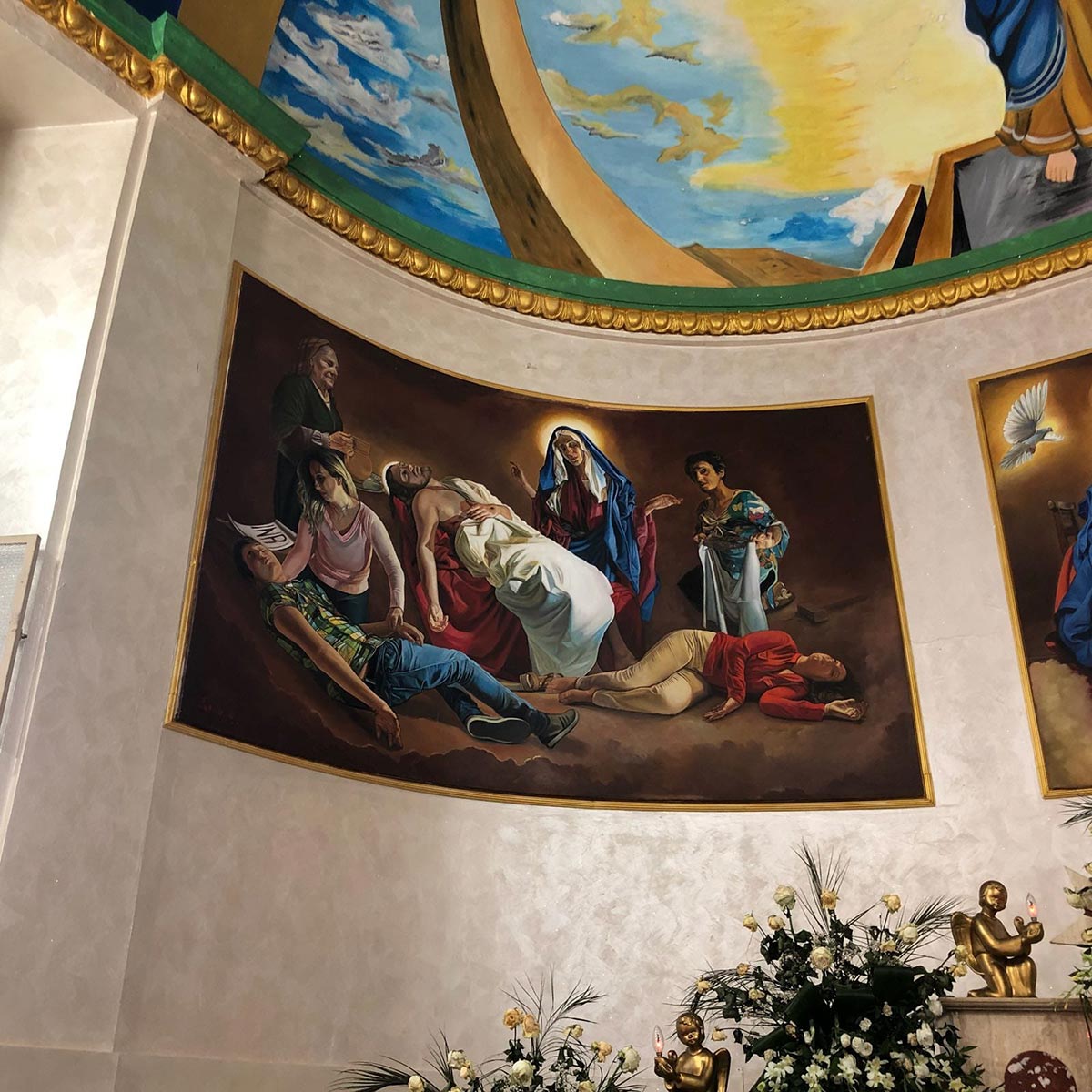 In the other, Mary sits mourning beside the body of Christ. At her feet lies the body of Maria Strangio, the wife of one of the San Luca clan bosses Giovanni Nirta. She was killed during an attack on her home on Christmas Day in 2006. Photo by: Antonio Lemma A group of hired assassins headed to Germany, where the ‘Ndrangheta clan of San Luca has a particularly strong presence. They murdered six young boys from the Pelle clan, sparking a swift response from Italian authorities, who then made more than 100 arrests.
In the other, Mary sits mourning beside the body of Christ. At her feet lies the body of Maria Strangio, the wife of one of the San Luca clan bosses Giovanni Nirta. She was killed during an attack on her home on Christmas Day in 2006. Photo by: Antonio Lemma A group of hired assassins headed to Germany, where the ‘Ndrangheta clan of San Luca has a particularly strong presence. They murdered six young boys from the Pelle clan, sparking a swift response from Italian authorities, who then made more than 100 arrests.
A fresco inside the church at San Luca reminds believers of those tragic days. In it, the victims are portrayed as saints.
While the Pelle-Vottari and Nirta-Strangio families were busy murdering each other, the remaining ‘Ndrangheta families of San Luca were building one of the world’s largest cocaine smuggling networks. Cooperating with Colombian narco-traffickers, the Pelle, Gambazza, Giorgi, and Romeo families came to control imports via the Calabrian port of Gioia Tauro, and later Antwerp and Hamburg.
Giuseppe Pelle, also known as Gambazza, came out on top. In the early 2000s, Pelle won the mandamento ionico, or control of the underworld of San Luca and its environs, a position he held for more than a decade. These mandamenti or districts are overseen by the Provincia, a council of bosses who make up the ‘Ndrangheta’s command structure.
Pelle’s successor in 2010 was Domenico Oppedisano, who was chosen as capo-crimine (provincial crime chief) in August 2009, during the wedding of Pelle’s niece Elisa. The new alliance was celebrated during a crime summit secretly filmed by police — a summit held at the Festival of the Holy Mary of Polsi.
“Weddings are sort of pre-summit occasions, and historically the ‘Ndrangheta bosses would then meet at the Festival of the Holy Mary of Polsi to hold their actual summit” explains Michele Fiorentino, the Carabinieri commander at San Luca. “This was where positions of power would be decided or confirmed. Today the festival doesn’t seem to be used in that way anymore, because of the police control.”
“But of course, I recognized a few important faces from the ‘Ndrangheta during this year’s festival. It’s just the fugitives and highest-ranking members who don’t show up, but we can’t rule out that they attend the festival in disguise,” he adds.
“We’re in the middle of the woods here, in pretty inaccessible territory, and they could easily organize a meeting near Polsi without us noticing. Let’s not forget that a fugitive criminal boss stays powerful only if he hides in his land of origin, or at least shows up there sometimes,” says Fiorentino.
A Battle for Hearts and Minds
“We have taken back religious symbolism from the ‘Ndrangheta!” Tonino Saraco, the new priest of Polsi, declares.
Partly by inviting the Carabinieri to the festival, he has indeed managed to make the Festival of Polsi more of a celebration for the faithful than for the criminals, but he has paid a price. He’s not well-liked, and at lunchtime he sits with the Carabinieri rather than the villagers.
It’s a clear sign that the omerta is still strong in these parts.
Every time reporters spoke to locals at Polsi, they were met with vehement denials that the ‘Ndrangheta was present in the village. But in isolated parts of the sanctuary, where Morra is still played, or in the village marketplace where vendors sell sausages, coffee, religious icons and CDs of odes to ‘Ndrangheta leaders, the criminal organization’s influence can still be felt.
Rosa said she doesn’t trust this new priest very much. After all, he replaced a beloved predecessor, who had local roots. Don Tonino, she feels, has yet to prove his worth.
For the Carabinieri and church alike, breaking the ‘Ndrangheta’s appropriation of holy symbols and the respect it enjoys is an uphill struggle. This is not simply a matter of military conflict. The battle between the Italian state and all the country’s criminal organizations is fought on a much deeper level. The fight against the ‘Ndrangheta is the hardest of them all, especially here on its home turf.
In places like San Luca, the ‘Ndrangheta uses isolation to cement its control. The more local people are cut off from the wider world, the easier it is to set rules and have them respected. As long as there are places like the sanctuary of Polsi where the mystery of enduring mafioso bonds can be kept alive, the ‘Ndrangheta will be able to thrive outside its motherland: whether in Milan, London, Sydney, or Duisburg.
At a time and place where many young people feel lost and cut adrift from society, one of the most powerful criminal organizations in the world dangles the promise of a “holy” mission that will turn them strong, powerful, and rich beyond their wildest dreams.

